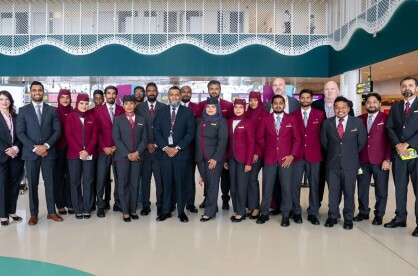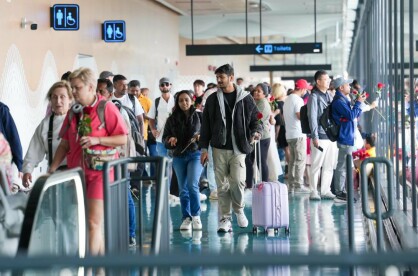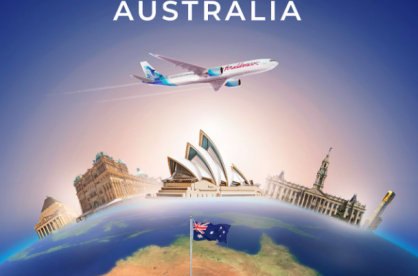Vaccines and tourism
Despite major progress made on vaccine rollouts in Maldives' tourism markets, future still looks uncertain.

Despite major progress made on vaccine rollouts in Maldives' tourism markets, future still looks uncertain.

Tourist arrivals to the Maldives had historically been dominated by European countries, with the United Kingdom, Germany and Italy taking the top positions. With the explosion of the middle-income classes in China and India, however, this has changed, with China, followed by India, taking the top two spots in 2019. Things looked rosy for the Maldives, with tourist arrivals in 2019 climbing 15 percent compared to 2018, to reach 1.7 million tourists.
Then came the pandemic! With the country closing its borders for three months in 2020, arrivals plunged 67 percent, a decline worse than the numbers in the aftermath of the 2004 tsunami disaster.

The industry is slowly picking up again in 2021, albeit with a few hiccups, with the increase in COVID-19 cases in the country in May/June, and closing of borders to South Asian tourists, effectively shutting out its largest tourism market, India. There are, however, a few key changes in the market that are worthy of mention.
Chinese tourists, who accounted for 17 percent of total arrivals in 2019, declined to 6 percent of arrivals in 2020. In 2021, the numbers have not picked up at all, with Chinese tourists 'reluctant' to travel overseas, fearing other country's management of COVID-19 and the risks of contracting the disease while overseas, according to a survey conducted by McKinsey. The 14-day quarantine requirement imposed for all inbound passengers to China also plays a major role in this reluctance.
The 'traditional' markets (Germany, Italy, Russia, United Kingdom, France, China, India, Australia and the USA) have historically accounted for higher than 60 percent of total arrivals, although this dipped to 57 percent in the first half of 2021, mainly due to the decline in the Chinese market. However, Russia and India have more than made up for this. Arrivals from India increased from 10 percent of total arrivals in 2019 to 18 percent of total arrivals for the first six months of 2021, despite a ban on arrivals from South Asia for two months during the year. Arrivals from Russia has also increased, from 5 percent in 2019 to more than 24 percent of arrivals for the first six months of 2021.

The tourist industry, as always, has been innovative in sustaining itself, expanding and seeking new markets, given the decline in traditional ones. The chart below shows the change in the Maldives' tourism markets in the first six months of 2021, compared to the first six in 2020. The Maldives has been successful in tapping new markets, such as the Middle East, Central and Eastern Europe, the Americas, as well as Africa.

This brings us to the next question. Will the country be able to sustain these trends, and continue despite the pandemic? One important aspect to consider in this debate is the progress on vaccinations in the countries where the Maldives has traditionally tapped visitors from. According to data available on the share of people vaccinated against COVID-19 as of 7 August, almost all the country's traditional markets have vaccinated close to or over 50 percent of their vaccine eligible populations. Of concern for the Maldives is the percentage of people fully vaccinated in Russia, at 19 percent and India, at 8.2 percent. These are currently the Maldives' two largest markets.

Anecdotal evidence also suggests that the Maldives has again become a 'quarantine destination' for South Asians. The spike in cases in the Maldives in May/June are partly attributed to this phenomenon, whereby South Asian workers visit the Maldives to complete their quarantine, given that many countries in the Middle East had placed Maldives on their 'green lists,' meaning that travellers from the Maldives do not have to undergo quarantine in these countries.
On 29 July, Abu Dhabi placed the Maldives on its green list, while other countries in South Asia were not. This meant that migrant workers travelling to Abu Dhabi visit the Maldives, stay in guesthouses in either Malé or Hulhumalé for 14 days, presumably at a cost lower than they would have to in their destinations, and then travel on to the Middle East. This is of high risk for the Maldives, as an increase in cases may again force lockdowns in the country, impacting on its tourism marketing. On 17 August, however, Abu Dhabi has again taken the Maldives off its green list, presumably due to the ease in restrictions announced in the Maldives. This comes amidst moves by Maldivian authorities to initiate inspections of tourism facilities across the country, after reports of tourists being accommodated against regulations and health guidelines in place.

As the industry looks towards new markets, consideration must also be given to vaccination rollouts in these markets. According to 'Our World in Data,' the United Arab Emirates, which registered a 429 percent increase in arrivals, has fully vaccinated 72 percent of its vaccine-eligible population. Some of the other countries, though, such as Saudi Arabia, from where 8,485 tourists visited the Maldives in the first six months of 2021, only 29 percent has been fully vaccinated.
Despite progress made on controlling Covid-19, the Maldives is still on the UK's red list, giving raise to questions on whether the country will be able to soon tap this market, as well as the other 'traditional' markets in the months to come.
The Maldives, with over 62 percent of GDP dependent on tourism, needs to keep open, despite challenges, to keep the economy going, to allow Maldivians to survive this pandemic. However, consideration also must be given to whether the tourists the country is allowing to visit are not a risk for the people. It is a case akin to the question of which comes first: the chicken or the egg. Vaccine green card rollouts will help.



